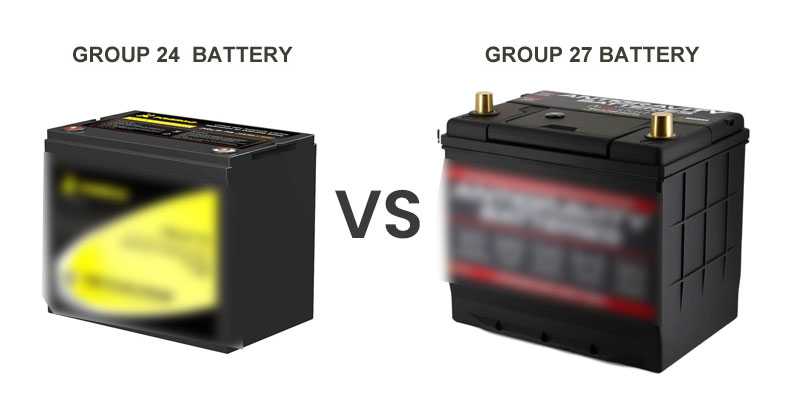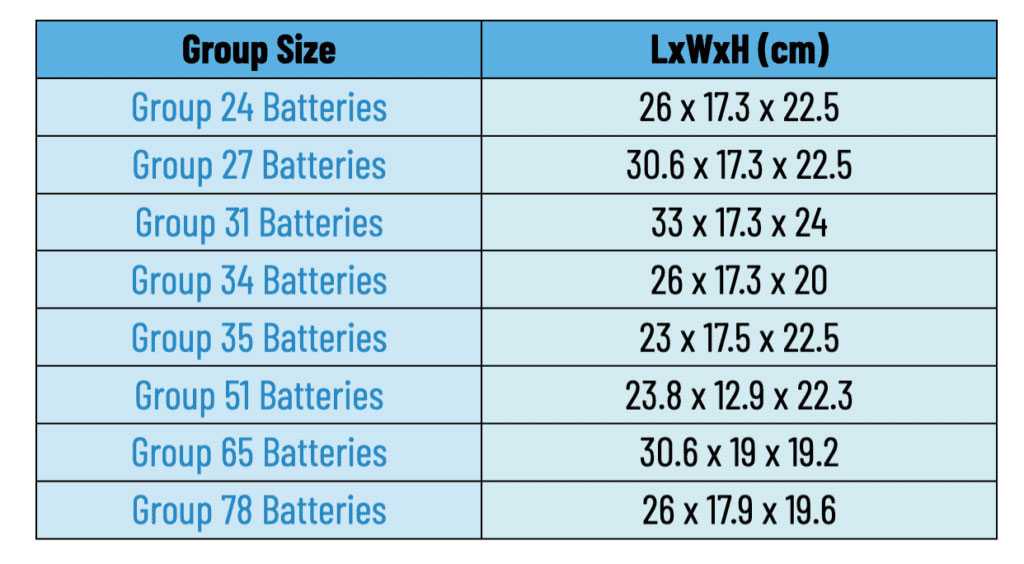Group 24 and Group 27 marine batteries are commonly used in boating and marine applications, but they differ in size, capacity, and performance characteristics. Understanding these differences is crucial for selecting the right battery for your needs, ensuring optimal performance and reliability on the water. (Read: BCI Battery Group Size Chart Guide and BCI Group Battery Factory Wholesale)
What Are Group 24 and Group 27 Marine Batteries?
Group 24 and Group 27 batteries are standardized sizes defined by the Battery Council International (BCI). These batteries are primarily used in marine applications, including powering boats, RVs, and other recreational vehicles. Each group size indicates specific dimensions and capacity ratings, which affect their suitability for various applications.Chart: Overview of Group Sizes
| Battery Group | Dimensions (L x W x H in inches) | Typical Capacity (Ah) | Typical Use |
|---|---|---|---|
| Group 24 | 10.25 x 6.75 x 9.00 | 70-85 | Small to medium boats |
| Group 27 | 12.00 x 6.75 x 9.00 | 85-110 | Medium to large boats |
How Do the Sizes of Group 24 and Group 27 Batteries Compare?
The primary difference between Group 24 and Group 27 batteries lies in their physical dimensions and capacity:
- Group 24: Measures approximately 10.25 inches long, 6.75 inches wide, and 9 inches high.
- Group 27: Larger at about 12 inches long, 6.75 inches wide, and 9 inches high.
This size difference translates to varying capacities, with Group 27 batteries typically offering more amp-hours (Ah) than Group 24 batteries.
What Are the Typical Applications for Group 24 and Group 27 Batteries?
Group sizes dictate their applications:
- Group 24 Batteries: Often used in smaller boats or as starting batteries for outboard motors due to their lighter weight and sufficient capacity for short trips.
- Group 27 Batteries: Better suited for larger vessels requiring more power for longer durations, such as house batteries or deep-cycle applications that support onboard electronics.
Chart: Application Comparison
| Battery Type | Typical Applications |
|---|---|
| Group 24 | Small boats, outboard motors |
| Group 27 | Larger boats, RVs, house power systems |
How Do Performance Specifications Differ Between Group 24 and Group 27 Batteries?
Performance specifications such as capacity (measured in amp-hours) and discharge rates vary between these two groups:
- Group 24: Generally has a capacity range of 70 to 85 Ah.
- Group 27: Offers a higher capacity range of 85 to 110 Ah, making it more suitable for applications that demand more energy over extended periods.
This difference in capacity affects how long each battery can power devices before needing a recharge.

Why Is Choosing the Right Battery Size Important?
Choosing the correct battery size is crucial for several reasons:
- Power Requirements: Ensures that your vessel has enough energy to operate all necessary equipment without running out of power.
- Weight Considerations: A larger battery may add unnecessary weight to smaller vessels, affecting performance.
- Space Availability: The physical dimensions must fit within designated battery compartments on your boat or RV.
Selecting the appropriate group size helps maintain efficiency and safety while enjoying your time on the water.
FAQ about Group 24 vs. Group 27 Marine Batteries
Q: Can I replace a Group 24 battery with a Group 27 battery?
A: Yes, as long as there is sufficient space in the battery compartment, a larger capacity battery can provide more power.Q: Which battery lasts longer?
A: Generally, a Group 27 battery lasts longer due to its higher capacity compared to a Group 24 battery.Q: Are there different types of batteries within these groups?
A: Yes, both group sizes can be found in various types such as lead-acid, AGM (Absorbent Glass Mat), or gel batteries.
Industrial News
Recent advancements in marine battery technology have focused on enhancing energy density and efficiency while reducing weight. Manufacturers are increasingly offering lithium-ion options alongside traditional lead-acid batteries for both group sizes, providing boaters with more choices tailored to their specific needs. Additionally, regulatory bodies are emphasizing environmental standards for battery disposal and recycling practices within the marine industry.
Redway Expert Insights
Understanding the differences between battery groups is essential for any boater,” states an expert from Redway Power. “Choosing the right size not only impacts performance but also ensures safety on the water by providing adequate power for all onboard systems.”



